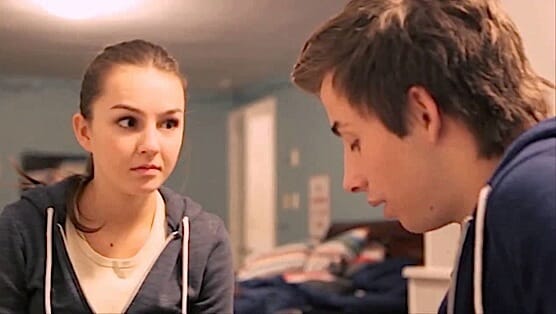A Girl Like Her

Right off the bat you should know that A Girl Like Her is essentially an anti-bullying Public Service Announcement. If you go into the film knowing this, then it’s easier to appreciate the good things that the movie has going for it.
Writer/director Amy Weber’s obvious goal is to make A Girl Like Her feel so real that it will have an impact on the bullies currently running rampant in schools across America. She wants to make bullies aware of how their words and actions affect their victims, so they’ll flip their monster switch from ON to OFF and maybe, just maybe, treat their peers with some basic human decency. But instead of telling the story from the victim’s perspective, as is the norm, A Girl Like Her tries to make us better understand the bully. The film endeavours to show us that there are reasons why bullies attack others (“Hurt people hurt people.”) and that the only way to solve this problem is to address the root cause.
In an effort to achieve this “real life” feel, the film is made up entirely of found footage and “documentary” interviews. It begins with footage of Jessica Burns (Lexi Ainsworth) hanging out with her best friend Brian Slater (Jimmy Bennett). Brian appears to be an AV obsessive as he’s constantly filming his every waking moment. And since he spends most of his time with Jessica, there’s ample footage of them studying together, driving around town and watching Rom Coms. They’re two normal teens living normal lives. But we very quickly learn that Brian is Jessica’s only friend and that she’s being tormented by the popular girls, whose undisputed leader is the blonde and beautiful Avery Keller (Hunter King).
Brian decides that the only way to help his friend is to go to a “spy camera store” and get a small button camera that Jessica can use to secretly capture all the ways in which she’s bullied by Avery. Jessica reluctantly agrees. Flash forward and, from the perspective of the spy cam pinned to her sweater, we accompany Jessica as she swallows a bottle of pills and is later rushed to the hospital, unresponsive.
When news of her suicide attempt hits the halls of South Brookdale High, a documentary crew is conveniently already there to capture the students’ reactions. (Stay with me here.) The crew is making a documentary about the best American high schools, and South Brookdale is the only public school to ever be named in the top 10. But with Jessica in a coma, the crew quickly shifts gears and focuses on the suicide attempt. Students and teachers are interviewed about their thoughts on Jessica’s situation, the crew is allowed into Jessica’s hospital room and they follow her family throughout the ordeal. (Her parents are “hoping to promote awareness,” you see.) Then, when students point to Avery as Jessica’s likely tormenter, Avery is convinced to start a video diary of her life, all in service of providing the “popular girl’s perspective” on American high school today. With all that established, we can now get to the heart of the story: Avery.
-

-

-

-

-

-

-

-

-

-

-

-

-

-

-

-

-

-

-

-

-

-

-

-

-

-

-

-

-

-

-

-

-

-

-

-

-

-

-

-








































